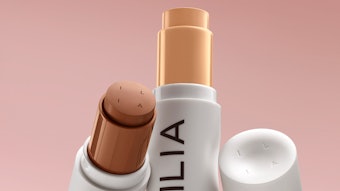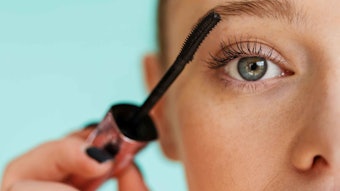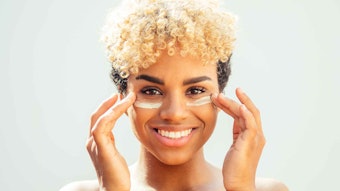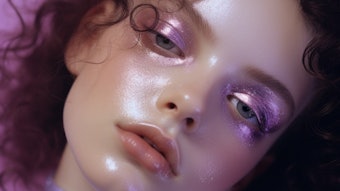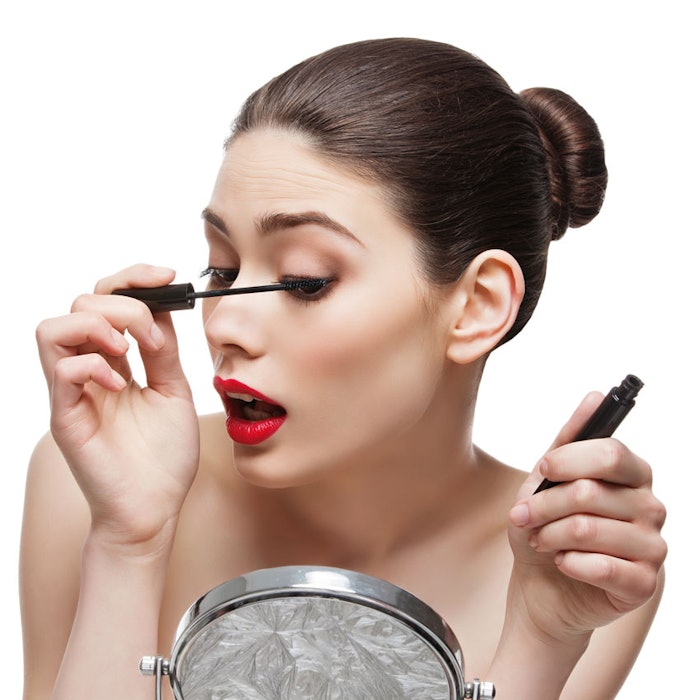
Cosmetic formulators are constantly challenged to develop products for daily use, and mascaras in particular are one of the most researched (and scrutinized) products a woman can purchase. Scientists must go to great lengths to ensure this miracle product delivers on the eyelash benefits it advertises. Further, formulating mascara is a niche expertise. On a scale of difficulty, it ranks high: it is messy, time-consuming and has the most dependent relationship with its package, compared with other cosmetics.
Formulators of other color products, such as hot pour or foundations, know all too well that mascara formulas fall into a category of their own, and have their own set of concerns. Achieving proper viscosity, appropriate drying time, pigment dispersion and wear capabilities are just a few. Maintaining stability and uniformity over time are especially important, too, since they affect the product’s dispensing properties. Mascaras also must be made to resist flaking or clumping upon drydown.
Therefore, thorough knowledge of each raw material will help the scientist balance the formula to obtain the desired results. Additionally, processing and filling experience will assist in making decisions in the lab—and all must be built around the brush and package. Taking one mascara formula and filling it in another’s package gives rise to an entirely different product. This article discusses these unique concerns in mascara formulation.
Mascara Use
Mascara benefits include making the eye lashes thicker, longer and darker, along with adding curve to lash tips. It is one of the oldest- known forms of color cosmetics; a simplified form of lead sulfite, malachite and charcoal soot was used in both ancient Egypt and Greece.1 In the mid 1900s, mascara evolved as a pressed product that was applied via a brush.
Mascara really broke into the mainstream with the revolution of applicators, such as the wired rod and brush.2 Applicators are still being modified to provide the most luxurious, long-wearing mascara to the consumer. As noted, formulators must therefore be certain that the product performs to its potential in conjunction with its brush and package.
Product Forms
Mascara products generally fall into one of two categories: anhydrous or emulsion. Both contain the same basic components of pigments, oils, waxes and preservatives. Anhydrous formulations are used in waterproof systems, and have good long-wearing capabilities. Due to their hydrophobic components, however, such products are more difficult for the consumer to remove, and solvent-based cleansers are often necessary. This also is true for cleaning laboratory and production equipment.
Most mascara emulsions fall into the oil-in-water (o/w) category, but some have water as the internal phase, i.e., water-in-oil (w/o), which also have good waterproof properties. The trend in recent mascara launches is the o/w type, which is generally anionic and can be made with smudge-proof and water-resistant properties by adding acrylate-based polymers.
Ingredients
Carbon black and iron oxides are the most common colorants used in mascaras. In addition, various polymers are used to develop a film on the lash. These are often acrylate- or urethane-based materials. Waxes are used to thicken the system, dictate deposition and provide a steady viscosity. These include high and low melting point waxes such as beeswax, carnauba wax, ozokerite and paraffin. Fatty alcohols such as cetyl and cetearyl also ensure a system build and level out at an appropriate viscosity.
Waxes are commonly adjusted when a product adheres to the brush excessively. Mascara flow properties—which are dictated by waxes, gums and other thickeners—are affected by applicator types and brush lengths. Ensuring the product’s affinity to lashes and release from the brush is also a concern for the ongoing coordination between the formula and package. Oils can range from silicone-based to mineral oil or castor oil. Typical emulsifiers are glyceryl stearate and stearic acid. Volatile solvents also dictate drying time. Other materials, such as cellulose-derived gums, help to maintain the product’s structure and preservative system.
Before the formula is mixed, pigments should be properly milled and/or mixed in a solvent to avoid agglomeration or separation. Drawing down the dispersion on a tile and looking for undispersed pigment will ensure colorants are uniform and developed properly.
Application Considerations
Traditionally, film formers are used in mascara to achieve longer wear and faster drying while avoiding transference to the lower eyelids. They are central to mascara innovation and can affect formulation traits such as lengthening, volume and curve. Using film formers in a perfect balance with waxes and volatile solvent achieves the desired properties.
Drying time: A common problem faced by mascara formulators is finding the right drying time for the product. This can affect how the product sets on the lashes as well as its evenness in application. Formulators can control this by varying the levels and types of volatile solvents used. Volatile solvents range from silicone chemistries such as linear siloxanes to isododecane or polyisobutane. Generally, a balance of one highly volatile solvent with one less volatile solvent is preferred.
To remedy a formula that applies nicely but dries up, one can balance the ratio of volatility and solvents to provide better dryness options. Also, the duration of the drydown is especially important when formulating for attributes such as curling lashes, since the film needs to set after the brush has helped to curl the lashes.
Viscosity: Formulators must consider the relationship of viscosity and final package for an excellent application, and the choice of waxes, gums and fatty alcohols dictate the viscosity. A common stability issue with mascara formulation is a change in viscosity over time—typically an increase. This is due to wax crystallization and, possibly, an excessive decrease of the solvent in the formulation, leaving behind more solids. The best way to modify viscosity is by titrating the thickening agent to achieve both the desired viscosity and a stable formulation. This will ensure excess wax is not present, which could thicken the system as the product is used and ages. Note that heavier viscosity products tend to deposit more on the lashes.
Besides choosing and varying levels of waxes and solvents, consistent mixing will allow the formula to properly set. Scientists can explore formula crystallization points to coordinate mixing efforts and ensure that shear is not applied during those critical points during cool down—since this can result in a lower viscosity and possible lumps in the batch.
The separation of a polymer or oil on the surface of the mass is another stability issue that can arise; increasing the product’s emulsifiers or waxes may solve this incompatibility.
Preservation: Recently, mascara formulations have taken a different direction by introducing actives and polymer ingredients to help lashes grow, as well as to condition and protect them. Similar claims are seen in hair care.3 As formulations become more complicated with these added variables, proper preservation, due to the proximity of the product to the consumer’s eyes and sensitive facial skin, is even more important.
Final Considerations
Like other product types, issues arise during the manufacturing and filling of mascaras. Consistency from the laboratory to production is essential. This means not only mixing times and speed but also the percent of volatiles lost at different points in process, which must match. It is prudent to analyze the key ingredients of a formula, such as the solvents and water, to measure the loss of these ingredients and decide what needs to be added back into the formula. Replicating these results in lab and scale-up batches ensures reproducibility. Although the manufacturing site will typically have a closed system to prevent the loss of volatiles, formulators must be vigilant about covering their batches back in the lab.
Filling is usually performed by a positive displacement filler that includes a pressurized supply system. Packaging components should be sealed as soon as filling is complete to prevent drying in the package. A pressurized system is also necessary to avoid any air pockets during filling, and to avoid weight inconsistencies.4
Conclusion
Throughout the formulation of mascaras, scientists will need to set up proper experimental designs to test the product and prepare for the unexpected. The unexpected will usually develop when the product and package first meet. This is truly an instance where one needs to fully experience the product to then go back to the drawing board and perfect it further.
References
1. T Riordan, Inventing beauty: A history of the innovations that have made us beautiful, Broadway Books, New York (2004)
2. M Angeloglou, A history of make-up, The Macmillan Company, New York (1970)
3. RR Wickett and T Evans, Practical modern hair science, Allured Business Media, Carol Stream, IL USA (2012) pp 324-332
4. D Buell et al, The manufacture of cosmetics, Harry’s Cosmeticology, Chemical Publishing Co, Revere, MA (1973) pp 788-849

